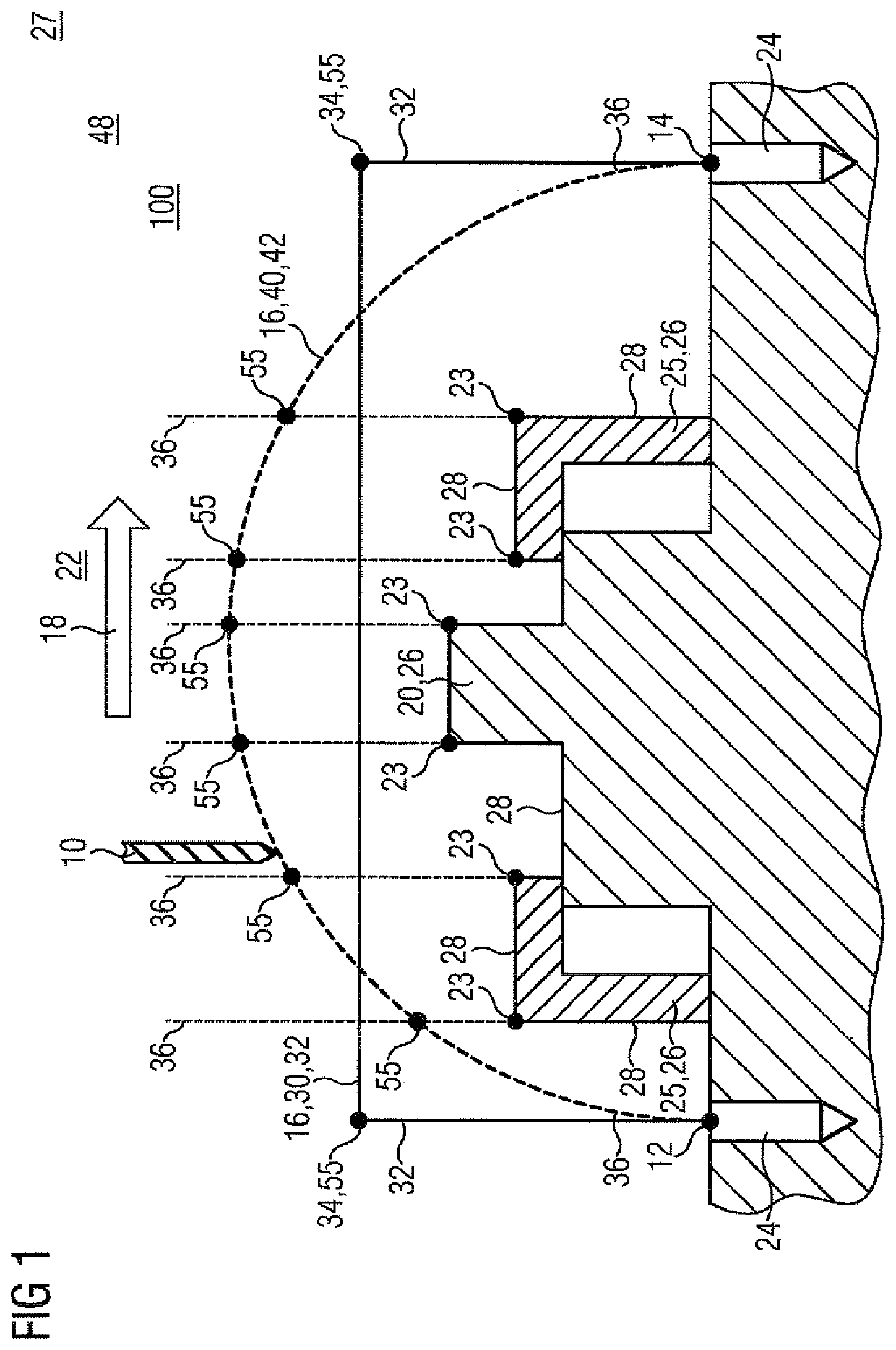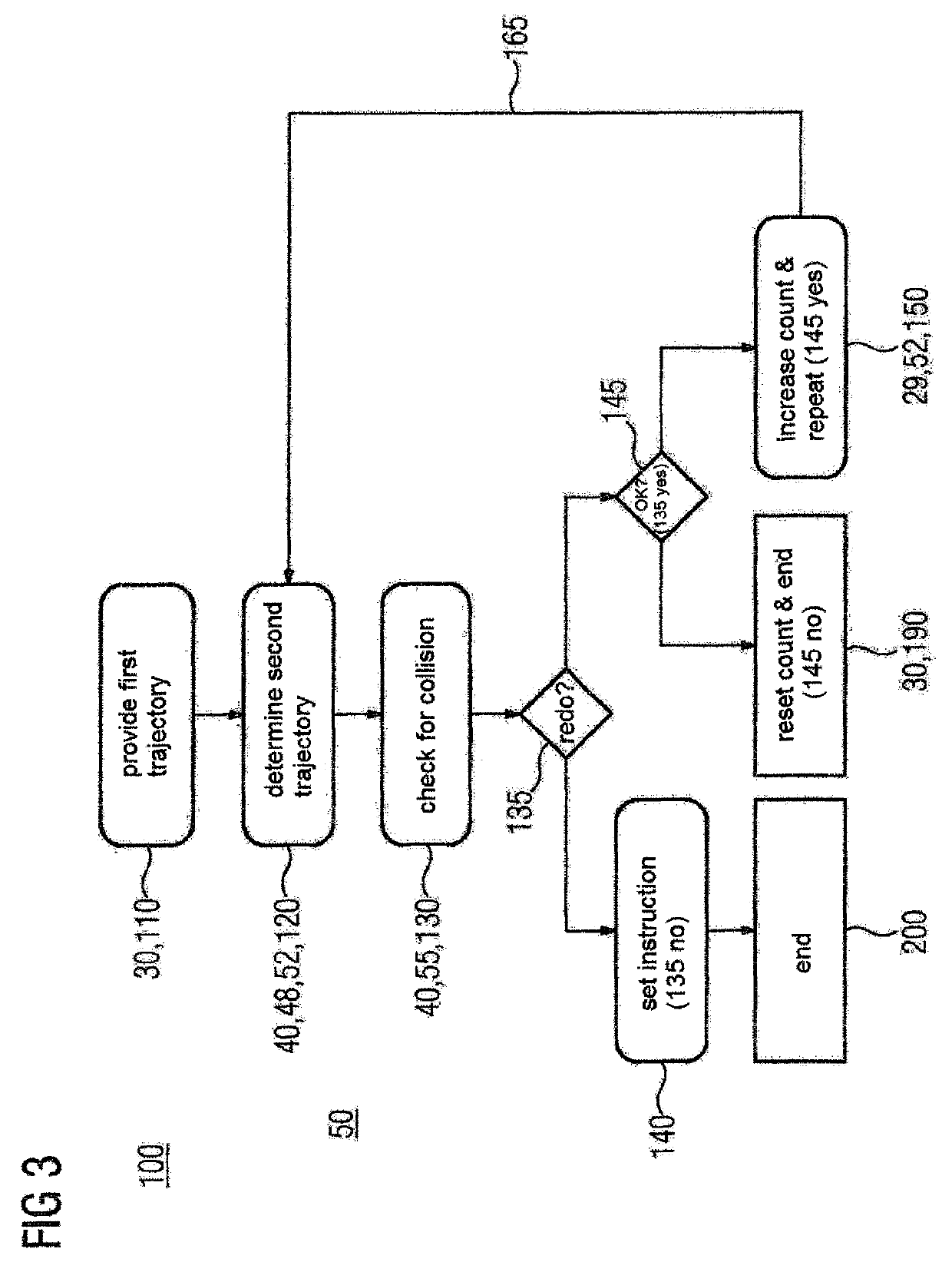Trajectory determination method for non-productive movements
a non-productive movement and trajectory determination technology, applied in the direction of programmed manipulators, programme control, instruments, etc., can solve the problems of requiring considerable computing power, and achieve the effect of reducing vibration stresses on the machine tool, rapid traversing of the tool, and excessive wear of the machine tool
- Summary
- Abstract
- Description
- Claims
- Application Information
AI Technical Summary
Benefits of technology
Problems solved by technology
Method used
Image
Examples
second embodiment
[0028]FIG. 2 shows a portion of the method 100 according to the invention in which the algorithm 48, which is not shown in greater detail, is called in a plurality of runs 44, 46. The embodiment shown serves to perform a non-productive movement of a tool 10 in a machine tool 50. The method 100 is performed in a travel envelope 22 in which obstacles 26, which are not shown in greater detail, with an obstacle contour 28 and edges 23 are arranged. The travel envelope 22 here takes substantially the same form as the travel envelope 22 in FIG. 1. In the first run 44, the algorithm 48 establishes a second trajectory 40 which is based on a model 27 of the travel envelope 22 with control planes 36 with target corridors 37, 53.
[0029]The method 100 in FIG. 2 is a two-dimensional projection of a three-dimensional movement. The control planes 36 each end at an edge 23 which is part of an obstacle 26 in the travel envelope 22. A first target corridor 37, which is defined by first and second corr...
third embodiment
[0031]FIG. 3 shows a sequence diagram of the method 100 according to the invention. The embodiment shown serves to perform a non-productive movement of a tool 10 in a machine tool 50. A provision step 110 provides a first trajectory 30 for the non-productive movement 16 to be performed, such as for example in FIG. 1. This proceeds, for example, by a first trajectory 30 input manually by a user for a algorithm 48 being loaded from an electronic storage device. In a subsequent optimization step 120, the provided first trajectory 30 is further processed by means of the algorithm 48 and a second trajectory 40 optimized for at least one target parameter is established. An iteration counter 52 which represents the number of runs of the optimization step 120 is initialized in a first run of the optimization step 120. The second trajectory 40 established in the optimization step 120 leads from the same starting position 12 to the same target position 14 as the first trajectory 30. In a furt...
PUM
 Login to View More
Login to View More Abstract
Description
Claims
Application Information
 Login to View More
Login to View More - R&D
- Intellectual Property
- Life Sciences
- Materials
- Tech Scout
- Unparalleled Data Quality
- Higher Quality Content
- 60% Fewer Hallucinations
Browse by: Latest US Patents, China's latest patents, Technical Efficacy Thesaurus, Application Domain, Technology Topic, Popular Technical Reports.
© 2025 PatSnap. All rights reserved.Legal|Privacy policy|Modern Slavery Act Transparency Statement|Sitemap|About US| Contact US: help@patsnap.com



